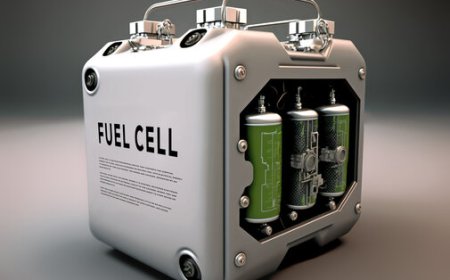Causes Of Biodiversity Loss
The major causes of biodiversity loss in India include habitat destruction, pollution, invasive species, overexploitation, and climate change, threatening ecosystems and wildlife survival.

Biodiversitythe variety of life on Earth, from genes and species to ecosystemsis fundamental to human existence. It sustains the air we breathe, the food we eat, the water we drink, and even the climate we live in. Yet, we are facing a global biodiversity crisis. According to the Intergovernmental Science-Policy Platform on Biodiversity and Ecosystem Services (IPBES), one million species are currently at risk of extinction due to human actions.
In this blog, we explore the Causes Of Biodiversity Lossand why this issue demands urgent attention. Understanding the drivers behind biodiversity decline is the first step toward finding solutions that can preserve life on Earth.
? Learn About the Causes of Biodiversity Loss - Student Center
The main drivers of biodiversity loss are habitat loss and fragmentation, overexploitation of resources, pollution, the introduction of invasive species, and climate change. These factors are often interlinked, and their combined impacts can have devastating consequences for ecosystems and the species they support.
Lets take a detailed look at each major cause.
1. Habitat Loss and Fragmentation
Habitat destruction is the leading cause of biodiversity loss worldwide. As human activities expand, natural habitats are cleared or degraded, leaving many species with no place to live, feed, or reproduce.
a. Deforestation
Forests are home to more than 80% of terrestrial species, yet they are rapidly disappearing. Trees are cut down for:
-
Agriculture (e.g., palm oil, soy, livestock).
-
Urban development and infrastructure.
-
Logging for timber and paper.
This destruction leads to direct loss of habitat and forces animals to move, often into unsuitable areas, where survival is difficult.
b. Urbanization
As cities grow, they consume land that was once rich in flora and fauna. Concrete jungles replace wetlands, forests, and grasslands, leading to reduced species richness.
c. Agricultural Expansion
Modern agriculture emphasizes monocultures and high-yield crops, often at the expense of native biodiversity. Pesticides and fertilizers used in these systems also degrade soil and water quality.
d. Habitat Fragmentation
When large natural areas are divided by roads, dams, or settlements, wildlife is forced into smaller, isolated patches. This limits gene flow, makes populations more vulnerable to disease and inbreeding, and increases the risk of extinction.
2. Overexploitation of Natural Resources
Overexploitation refers to harvesting natural resources faster than they can replenish. This has put immense pressure on both terrestrial and aquatic ecosystems.
a. Unsustainable Fishing
Overfishing is depleting fish stocks globally, affecting marine food chains and disrupting coastal ecosystems. Coral reefs, already fragile, suffer further from unsustainable practices like bottom trawling.
b. Illegal Wildlife Trade
Poaching for ivory, horns, skins, and exotic pets has pushed many speciesincluding tigers, elephants, and rhinoscloser to extinction. The illegal wildlife trade is not only a conservation issue but also a global security threat.
c. Unsustainable Logging
Many forests are logged without sustainable management practices. Clear-cutting or selective logging without replanting leads to permanent ecosystem loss and biodiversity depletion.
3. Pollution
Pollution from human activities has infiltrated every ecosystemfrom the depths of oceans to the peaks of mountains.
a. Water Pollution
Industrial discharge, sewage, and agricultural runoff cause eutrophication, killing fish and creating dead zones in rivers, lakes, and oceans. Plastics and microplastics also choke marine animals and contaminate food chains.
b. Air Pollution
Pollutants such as nitrogen oxides, sulfur dioxide, and particulate matter impact both plant and animal health. Acid rain alters soil and water chemistry, making environments unsuitable for many species.
c. Chemical Pollution
Pesticides, herbicides, and heavy metals accumulate in the food chain, harming not just insects and small animals, but also apex predators and humans. For instance, the pesticide DDT nearly drove some bird species to extinction before it was banned.
4. Invasive Species
Species introducedeither intentionally or accidentallyinto new environments can cause significant harm to native ecosystems.
a. Competition
Invasive species often outcompete native species for resources. For example, the introduction of the Nile perch into Lake Victoria wiped out several hundred native fish species.
b. Predation
Invasive predators can decimate native prey species that have not evolved defenses. Domestic cats, for instance, are responsible for the extinction of several island bird species.
c. Disease Transmission
Some invasive species bring pathogens that native species have no immunity against, leading to population crashes.
5. Climate Change
Climate change is one of the most complex causes of biodiversity loss, as it interacts with all other drivers.
a. Shifting Habitats
Rising temperatures and changing rainfall patterns force species to migrate to cooler areas, often leading to conflict, competition, or extinction.
b. Ocean Acidification
As oceans absorb CO?, they become more acidic, affecting organisms like corals, mollusks, and plankton. This has cascading effects on marine food webs.
c. Extreme Weather Events
More frequent droughts, floods, wildfires, and heatwaves destroy habitats and put stress on wildlife, especially those already at risk.
? Why Biodiversity Matters
-
Ecosystem Services: Biodiversity ensures air purification, water filtration, pollination, and nutrient cycling.
-
Food Security: Diverse species in agriculture help resist pests, diseases, and climate changes.
-
Medicines: Many modern medicines are derived from plants and animals.
-
Cultural Value: Indigenous communities around the world rely on biodiversity for spiritual and cultural identity.
? Combating Biodiversity Loss: What Can Be Done?
While the causes of biodiversity loss are daunting, many solutions exist that can be implemented globally, nationally, and locally.
?? Protect Natural Habitats
-
Expand protected areas like national parks and wildlife sanctuaries.
-
Promote community-led conservation in rural and tribal regions.
-
Restore degraded ecosystems with reforestation and wetland rejuvenation.
?? Sustainable Resource Use
-
Enforce fishing and hunting regulations.
-
Promote sustainable forestry and agriculture.
-
Invest in renewable energy to reduce carbon emissions.
?? Reduce Pollution
-
Strengthen waste management systems.
-
Ban single-use plastics and harmful pesticides.
-
Treat industrial waste before discharge.
?? Control Invasive Species
-
Implement biosecurity measures to prevent invasions.
-
Educate the public on the risks of releasing exotic pets.
-
Eradicate or control existing invasive populations responsibly.
?? Tackle Climate Change
-
Reduce greenhouse gas emissions through clean technologies.
-
Adapt land and wildlife management to changing climates.
-
Support climate-resilient ecosystems.
? Conclusion: A Shared Responsibility
The causes of biodiversity loss are rooted in human activity, but so too are the solutions. Saving Earths biological wealth is not just about protecting endangered speciesits about safeguarding our future. If ecosystems collapse, the life-support systems we depend on will follow.
Through education, policy change, innovation, and individual action, we can reverse the tide of biodiversity loss. Each of us has a role to playwhether its planting a tree, reducing plastic use, or supporting conservation initiatives.
Lets act nowfor the planet, for future generations, and for the irreplaceable beauty of life in all its forms.


























